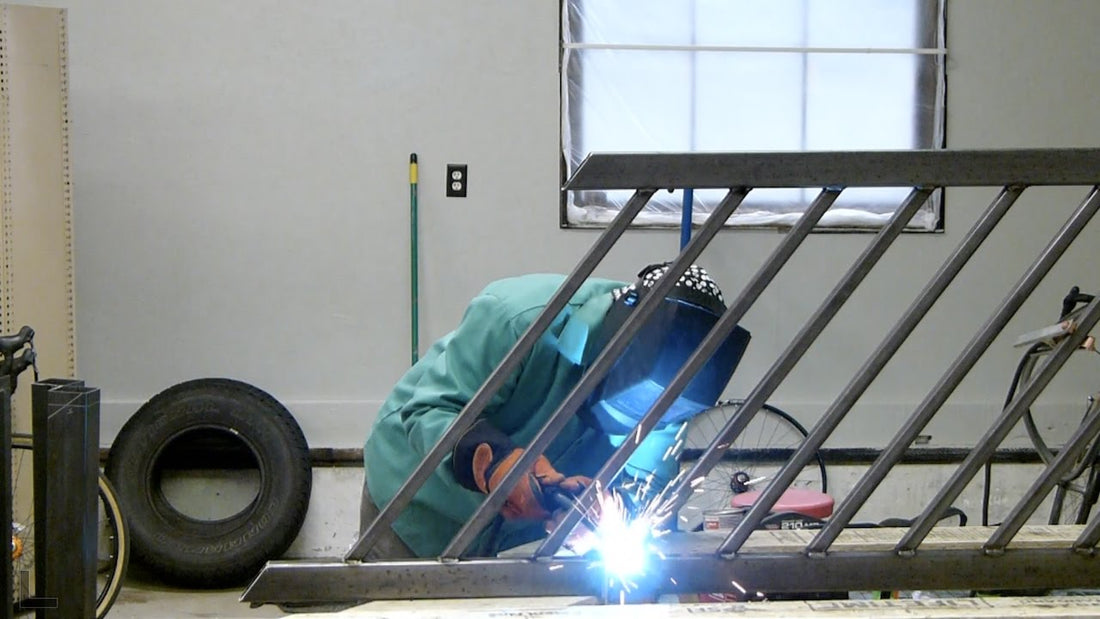If you pay attention to what’s popular in the world of interior design, you know that metal stair rails are extremely popular. New builds and remodels often feature metal balusters and bannisters over wood, and can range from detailed iron work to simple, square metal tubing. If you’re looking for a successful side business, fabricating stair railing could be a lucrative option.
Keep reading for 3 stair rail welding projects for your home or as a side hustle.
Steel, Square Metal Tube Welding Project
Let’s start with the basics, once you master the art of fabricating a basic railing with vertical balusters, you can move on to more complex work. Begin by creating detailed plans for your welding project, keeping in mind that current code for railings dictates a height between 34 and 38 inches. You’ll need a bandsaw, clamps, a vice grips, a MIG welder, grinder, and plenty workspace for this project.
Once you know your dimensions, cut your pieces. It’s a good idea to work from template pieces to ensure that everything lines up perfectly. Once your pieces are in place, clamp and weld them together. Finish by grinding smooth any weld that will show once the stair railing is installed.
Cable Stair Rail Welding Project
Cable railing is on trend right now, so it’s worth your time to learn this style of stair railing. As always, start with your dimensions, ensuring your pieces will fit correctly at install. Once you’ve made your cuts, tack weld your outer frame into place, pre-drilling the holes where your cables will thread through and connect.
Once your pieces are in place, securely MIG weld them before disc grinding your welds smooth and installing your end caps. Next, clamp your mounting brackets into place and MIG weld them securely to the stair pieces.
Thread your cables through and tighten them into place with beveled washers. Finish by tensioning your cables and removing any excess.
Wrought Iron Stair Rail Welding Project
Working with wrought iron can be as simple or as decorative as you like. Welders can easily create simple railings using many of the same techniques mentioned in the first two projects or be creative and artistic.
Wrought iron is unique in that it can be bent, twisted and manipulated into a number of decorative styles. Although many designs are complex, wrought iron itself is fairly easy to work with due as it has a good tensile strength and is resistant to fatigue. Additionally it’s corrosion resistant, making it the best choice for outdoor railings.
If you want to bend or twist your wrought iron stair pieces, look online to get an idea of the style you’d like. Purchase or create a jig to allow you to shape your iron, being sure to heat your metal just enough to manipulate it and not much more. Lay out your base and tack weld everything before MIG welding everything firmly into place.
